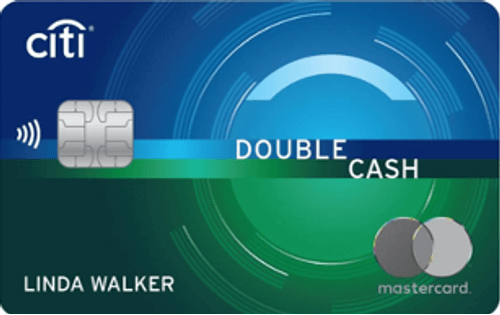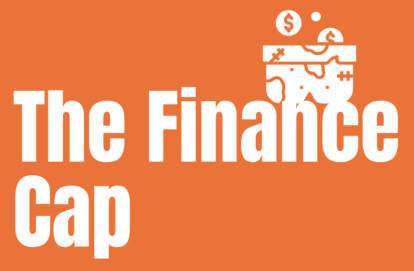Top 10 Cash Back Credit Cards in 2025: Pros, Cons, and Key Details
With so many options out there, choosing the right cash back credit card can be overwhelming. But the truth is, the best card for you depends on how you spend your money and what you want from a rewards program. Cash back cards are a popular choice because they make earning rewards simple—you spend, and you earn cash back, no points or miles to worry about. Whether you’re looking for a flat cash back rate on all purchases, or you want to maximize specific categories like groceries or dining, there’s a card out there for you.
In this post, we’ll explore 10 of the best cash back credit cards available right now, covering the pros and cons of each option. You’ll also find key details like the intro offer, APR, annual fee, and rewards rate so you can easily compare and decide which card might fit your lifestyle best. Let’s dive in!
Top 10 Cash Back Credit Cards in 2025:

1. Citi® Double Cash Card
- Intro Offer: No current bonus.
- APR: 20.24%-28.24% variable.
- Annual Fee: $0
- Rewards Rate: 2% cash back—1% when you buy, and an additional 1% when you pay.
Pros:
- Simple and generous cash back rate, with up to 2% on every purchase.
- No annual fee, allowing you to maximize rewards.
- Flexible redemption options as ThankYou® Points.
Cons:
- Requires full payment to get the maximum 2% back, which may be challenging for some.
- Lacks bonus categories, so there’s no opportunity to earn more in specific areas.
2. Chase Freedom Unlimited® Credit Card
- Intro Offer: 0% APR on purchases and balance transfers for 15 months; earn $200 after spending $500 in the first 3 months.
- APR: 20.49%-29.24% variable.
- Annual Fee: $0
- Rewards Rate: 5% on Chase Travel, 3% on dining and drugstores, 1.5% on everything else.
Pros:
- Diverse rewards categories, perfect for those who frequently dine out or shop at drugstores.
- 0% APR for 15 months on purchases and balance transfers.
- No annual fee, making it affordable and rewarding.
Cons:
- 1.5% flat rate is lower than other cash back cards with higher rates.
- Charges foreign transaction fees, which makes it less ideal for international purchases.
3. Discover it® Cash Back Credit Card
- Intro Offer: First-year cash back match.
- APR: 17.24%-28.24% variable.
- Annual Fee: $0
- Rewards Rate: 5% on rotating categories (up to $1,500 per quarter) and 1% on everything else.
Pros:
- Cash Back Match effectively doubles your first year’s rewards.
- Rotating 5% categories offer elevated cash back on select purchases.
- No annual fee.
Cons:
- Requires quarterly activation of rotating categories.
- 5% cash back limited to $1,500 per quarter; after that, it drops to 1%.
- Discover is not as widely accepted internationally.
4. Bank of America® Customized Cash Rewards Credit Card
- Intro Offer: $200 online cash rewards bonus after making at least $1,000 in purchases in the first 90 days.
- APR: 18.24%-28.24% variable.
- Annual Fee: $0
- Rewards Rate: 3% on a category of your choice, 2% at grocery stores and wholesale clubs (up to $2,500 in combined purchases each quarter), and 1% on other purchases.
Pros:
- Option to select your 3% category for customized rewards.
- Great for Bank of America Preferred Rewards members who can earn up to 75% more.
- No annual fee.
Cons:
- Spending cap for bonus categories, so larger spenders may find limitations.
- Requires active management to change 3% category based on spending habits.
5. Capital One Savor Cash Rewards Credit Card
- Intro Offer: $200 cash bonus after spending $500 in the first 3 months.
- APR: 20.49%-30.49% variable.
- Annual Fee: $0
- Rewards Rate: 3% on dining, entertainment, popular streaming services, and grocery stores; 1% on other purchases.
Pros:
- Great cash back rates on dining, entertainment, and grocery stores.
- No foreign transaction fees, ideal for travel.
- No annual fee, which adds to its affordability.
Cons:
- Excludes superstores like Walmart and Target from grocery cash back.
- Cash back may be limited for those who don’t spend heavily in these categories.
6. Blue Cash Preferred® Card from American Express
- Intro Offer: $250 statement credit after spending $3,000 in the first 6 months.
- APR: 19.24%-29.99% variable.
- Annual Fee: $0 intro for the first year, then $95
- Rewards Rate: 6% at U.S. supermarkets (up to $6,000 annually), 6% on select U.S. streaming subscriptions, 3% on U.S. gas and transit, 1% on other purchases.
Pros:
- High cash back on groceries and streaming, perfect for families.
- Includes rewards on gas and transit.
- First-year waiver on the annual fee.
Cons:
- Annual fee of $95 after the first year may offset rewards for low spenders.
- U.S.-centric rewards, limiting benefits for international purchases.
7. Wells Fargo Active Cash® Credit Card
- Intro Offer: $200 bonus after spending $1,000 in the first 3 months.
- APR: 20.24%-29.99% variable.
- Annual Fee: $0
- Rewards Rate: 2% unlimited cash rewards on purchases.
Pros:
- Simple, high-rate 2% cash back on all purchases.
- Introductory 0% APR for 15 months on purchases and balance transfers.
- No annual fee.
Cons:
- No bonus categories or opportunities to earn more in specific areas.
- Foreign transaction fees, limiting its use abroad.
8. Capital One Quicksilver Cash Rewards Credit Card
- Intro Offer: $200 cash bonus after spending $500 in the first 3 months.
- APR: 20.49%-30.49% variable.
- Annual Fee: $0
- Rewards Rate: 1.5% cash back on every purchase.
Pros:
- Straightforward 1.5% cash back on everything.
- No foreign transaction fees.
- No annual fee.
Cons:
- Lower base rate compared to cards offering 2% on all purchases.
- No special categories for extra cash back.
9. U.S. Bank Cash+® Visa Signature® Card
- Intro Offer: $200 bonus after spending $1,000 in the first 120 days.
- APR: 19.24%-29.24% variable.
- Annual Fee: $0
- Rewards Rate: 5% cash back on two categories you choose, 2% on one everyday category (e.g., groceries, gas), 1% on other purchases.
Pros:
- Customizable 5% categories offer flexibility for maximizing rewards.
- No annual fee, keeping it affordable.
- 2% cash back on a single everyday category.
Cons:
- Must select categories quarterly, which requires active management.
- Spending cap of $2,000 for the 5% cash back per quarter.
10. Fidelity® Rewards Visa Signature® Credit Card
- Intro Offer: None.
- APR: 19.24%-27.24% variable.
- Annual Fee: $0
- Rewards Rate: 2% cash back on all eligible purchases when deposited into a Fidelity account.
Pros:
- High 2% cash back on all purchases.
- Cash back goes directly into a Fidelity investment account, great for building savings or investments.
- No annual fee.
Cons:
- Requires a Fidelity account for redemption.
- No bonus categories or elevated earning opportunities.
Final Thoughts On The Top 10 Cash Back Credit Cards in 2025

Choosing the right cash back credit card is about more than just finding the card with the highest rewards—it’s about finding a card that aligns with your financial goals, spending patterns, and lifestyle. Each of these top 10 cash back cards brings unique strengths to the table, allowing you to pick one that maximizes your rewards and adds value to your everyday purchases.
For those who prefer a simple, flat-rate approach, options like the Citi® Double Cash Card and Wells Fargo Active Cash® Card offer a solid, straightforward return. The 2% cash back on every purchase is a great choice for those who want consistent rewards without needing to track categories or manage quarterly selections. These cards let you earn back on every dollar spent, making them perfect for anyone looking for a “set it and forget it” cash back card.
If you like the idea of tailoring rewards to fit specific spending categories, cards like the Bank of America® Customized Cash Rewards and U.S. Bank Cash+® Visa Signature® Card offer flexibility by allowing you to select categories for maximum cash back. This is great if your spending habits shift seasonally or if you have particular expenses, like gas or utilities, that you want to earn more on. However, these cards do require some management, as you’ll need to update your category choices periodically to keep your rewards optimized.
For families or individuals who spend heavily on groceries and dining, cards like the Blue Cash Preferred® Card from American Express and Capital One Savor Cash Rewards Credit Card deliver high cash back rates in these categories, helping you maximize rewards on essential expenses. Keep in mind, though, that some cards have annual fees, so it’s important to evaluate whether the higher cash back on groceries and dining justifies the cost over the year.
No matter which card you choose, it’s essential to consider factors beyond cash back rates. Foreign transaction fees, annual fees, and how rewards are redeemed can all impact the overall value of a card. For example, if you plan to travel internationally, cards with no foreign transaction fees, like the Capital One Savor or Quicksilver Cash Rewards, may be more beneficial. And if you already have a relationship with certain banks, cards like the Bank of America® Customized Cash Rewards can offer additional bonuses for loyal customers.
Ultimately, the best cash back credit card is the one that fits seamlessly into your spending habits, rewards you for purchases you’re already making, and aligns with your broader financial strategy. Choosing a card thoughtfully can turn your everyday spending into meaningful rewards, helping you save or reinvest that cash in ways that make a difference to your finances. So take some time to assess your habits, prioritize what’s most important to you in a cash back card, and make a choice that feels right for your wallet. Happy earning!
